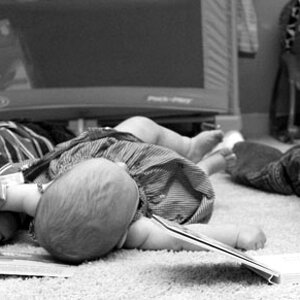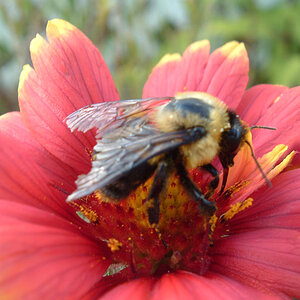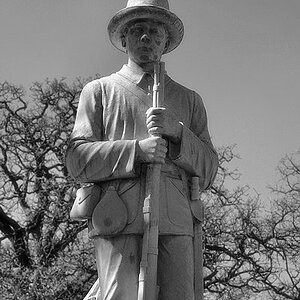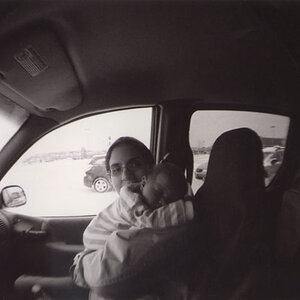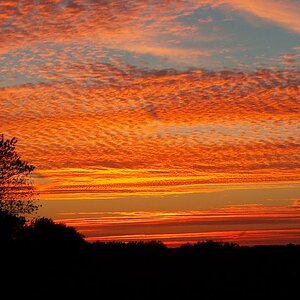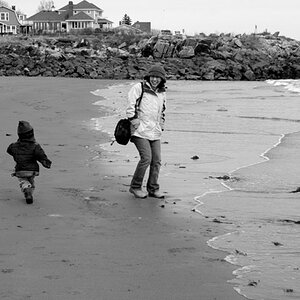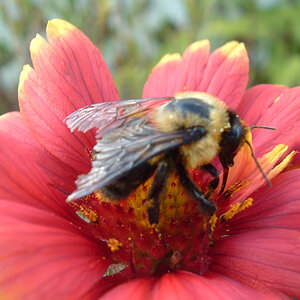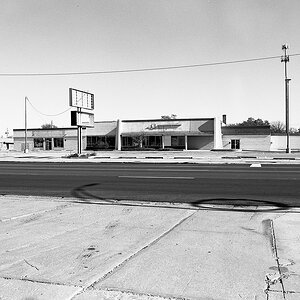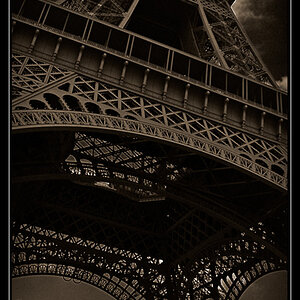Navigation
Install the app
How to install the app on iOS
Follow along with the video below to see how to install our site as a web app on your home screen.

Note: This feature currently requires accessing the site using the built-in Safari browser.
More options
You are using an out of date browser. It may not display this or other websites correctly.
You should upgrade or use an alternative browser.
You should upgrade or use an alternative browser.
D300 ISO settings
- Thread starter crazyy
- Start date
- Joined
- Dec 16, 2003
- Messages
- 33,896
- Reaction score
- 1,853
- Location
- Edmonton
- Website
- www.mikehodson.ca
- Can others edit my Photos
- Photos NOT OK to edit
*I think* it's because Nikon uses ISO 200 as it's native ISO setting (on some cameras anyway). That is their clean, unaltered signal from the sensor. Like any digital camera, higher ISO settings are achieved by amplifying the signal...which causes distortion, which is why we get digital noise at higher ISO settings.
But when it comes to a lower ISO...*I think* that the camera just uses an ISO 200 signal and underexposes it one stop. Of course, the metering is adjusted, so you don't actually get an underexposed shot...but I think that you would get the same noise/image quality as ISO 200.
But when it comes to a lower ISO...*I think* that the camera just uses an ISO 200 signal and underexposes it one stop. Of course, the metering is adjusted, so you don't actually get an underexposed shot...but I think that you would get the same noise/image quality as ISO 200.
inTempus
TPF Noob!
- Joined
- Dec 15, 2008
- Messages
- 3,692
- Reaction score
- 4
- Location
- Indiana
- Can others edit my Photos
- Photos OK to edit
That's my understanding too.*I think* it's because Nikon uses ISO 200 as it's native ISO setting (on some cameras anyway). That is their clean, unaltered signal from the sensor. Like any digital camera, higher ISO settings are achieved by amplifying the signal...which causes distortion, which is why we get digital noise at higher ISO settings.
But when it comes to a lower ISO...*I think* that the camera just uses an ISO 200 signal and underexposes it one stop. Of course, the metering is adjusted, so you don't actually get an underexposed shot...but I think that you would get the same noise/image quality as ISO 200.
To the OP;
On most Nikon models their native ISO is 200. This means to get to ISO 100 the processor alters the image data which will introduce noise. It's not much usually, but it does none the less. It's the same going up the ISO scale. When you change the ISO setting on your camera you're not changing the sensitivity of your sensor to light you're really telling the processor how much to amplify the signal. This too introduces noise.
As a side note, your camera will produce the best images set to its native ISO setting. For me, I shoot at ISO 100 (my cameras native ISO) when I can to maximize the image quality.
To get to ISO 50 on my Canon I have to "expand" my ISO in my setup menu which then makes ISO 50 available.
I suspect Nikon chooses ISO 200 as their native sensitivity as this will likely give cleaner images at higher ISO settings... at least by one stop compared to the competition. The trade off is not having ISO 100 available unless you enable it and it then introduces processing noise at that lower ISO. That's just a guess though...
dcclark
TPF Noob!
- Joined
- Feb 19, 2009
- Messages
- 480
- Reaction score
- 0
- Location
- Houghton, MI
- Website
- blog.dcclark.net
- Can others edit my Photos
- Photos OK to edit
This is the same idea as the HI-1 (-2, -3) settings on some Nikons -- it's similar to ISO 3200, 6400, etc. but isn't actually that real ISO setting -- it's taken at a lower (or higher) ISO, and processed in-camera, which gives more noise than usual.
- Joined
- Sep 2, 2005
- Messages
- 14,455
- Reaction score
- 3,328
- Can others edit my Photos
- Photos OK to edit
A bit more detail if it's helpful... whatever the numeric ISO numbers that are actually displayed are on your camera, those are actual ISO settings. The LO and HI and other non-numeric ones are non-native. I understand them to be interpolated in some way. The specifics of how they do that I am unsure of.
The general advice I have been given is to try to stick to the real numbers and avoid the interpolated ones.
Also worth noting that not ALL Nikons start at 200. The D200 has a low point of ISO100, for example. (I was displeased that it went up to 200 on the D300, but I suspect that's because of the sensor change)
The general advice I have been given is to try to stick to the real numbers and avoid the interpolated ones.
Also worth noting that not ALL Nikons start at 200. The D200 has a low point of ISO100, for example. (I was displeased that it went up to 200 on the D300, but I suspect that's because of the sensor change)
kundalini
Been spending a lot of time on here!
- Joined
- Jul 18, 2007
- Messages
- 13,607
- Reaction score
- 1,937
- Location
- State of Confusion
- Can others edit my Photos
- Photos NOT OK to edit
Most reactions
-
 428
428 -
 292
292 -
 285
285 -
 270
270 -
 221
221 -
 204
204 -
 185
185 -
 179
179 -
 168
168 -
 166
166 -
 148
148 -
 133
133 -
 120
120 -
 95
95 -
I
94
Similar threads
- Replies
- 3
- Views
- 311
- Replies
- 3
- Views
- 2K

